This site uses cookies so that we can provide you with the best possible user experience. The information about cookies is stored in your browser and performs functions such as recognizing you when you return to our website and helping our team understand the sections of the site that you find most interesting and useful.
05.05.2021
Ailerons - Completed
Between March 10 and April 1, 2021, we intensely and successfully worked on the development of our two ailerons. This precision work has been made possible by a strong engineering team and a reliable team of composite experts.
With this news, we want to give you a visual summary of the production process of these parts. Note that a complete and assembled aileron weighs around 1.5kg and is capable of supporting an aerodynamic load of 120kg!
To learn more about composite materials, we recommend our article: Composite materials.
Production process
The first step is to cut the carbon fiber from the roll. Once placed on a clean and degreased table, and once the resin is ready to use and we have put on our personal protective equipment, we can impregnate the carbon using a roller.
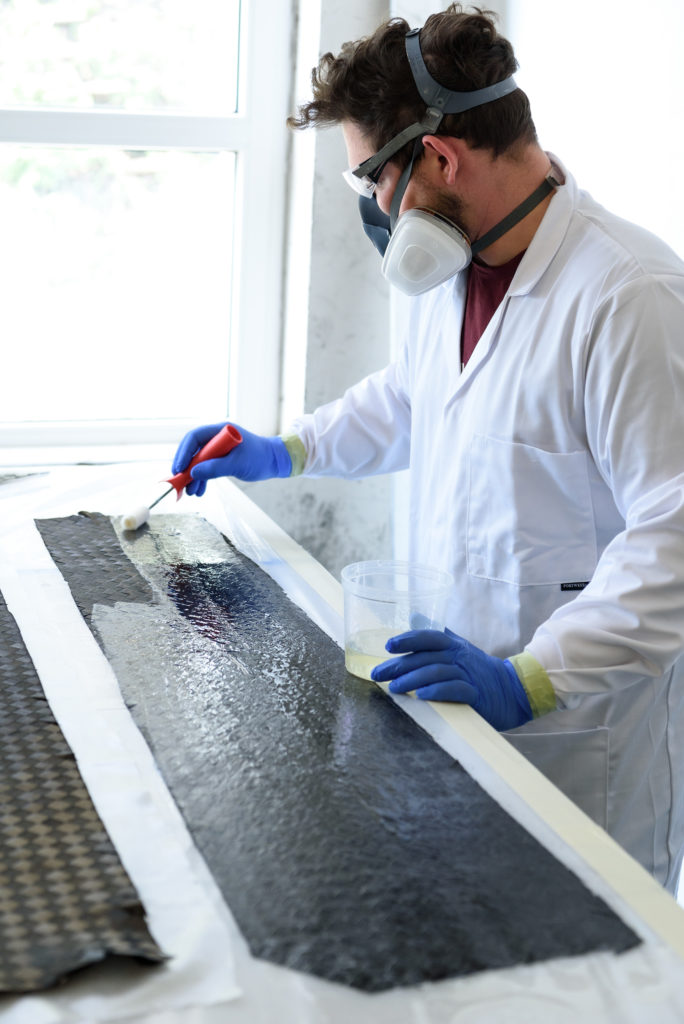
For the skin, we need two plies of carbon fiber i.e. two layers. We therefore deposit the second layer, previously cut, on the first already impregnated. After that, we wet the assembly again with resin and then add a protective plastic over the whole, which we will use as protection and transport aid.
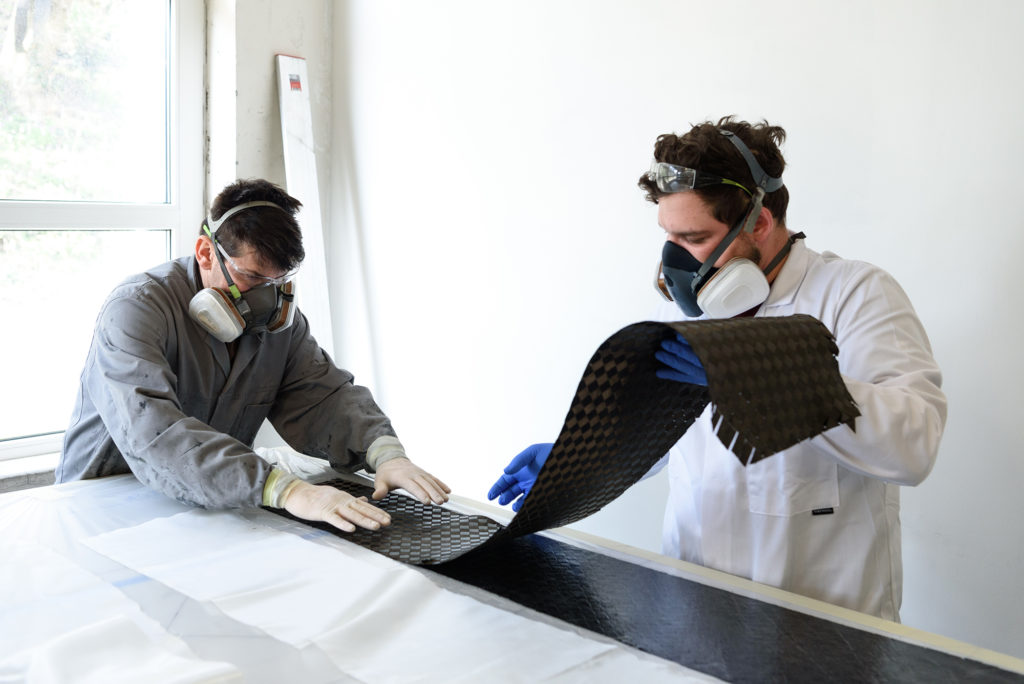
Once the protective plastic is in place, we carefully cut out in more detail the shape we need for the aileron. It is then time to transport the assembly into the mold and place it. Note that the mold has previously been wet with resin.


The assembly is then placed under vacuum for 24 hours, in order to compress the fiber/resin composite and remove as much of the air pockets as possible. Once cured, we prepare for the following layers by slightly sanding a part of the hardened surface.
Since we want to add a honeycomb layer, sanding allows better adhesion of the resin between the two materials.
It’s now time to start the previous process again: adding resin to the surface then gluing precisely cut honeycombs and vacuum bagging for 24 hours.
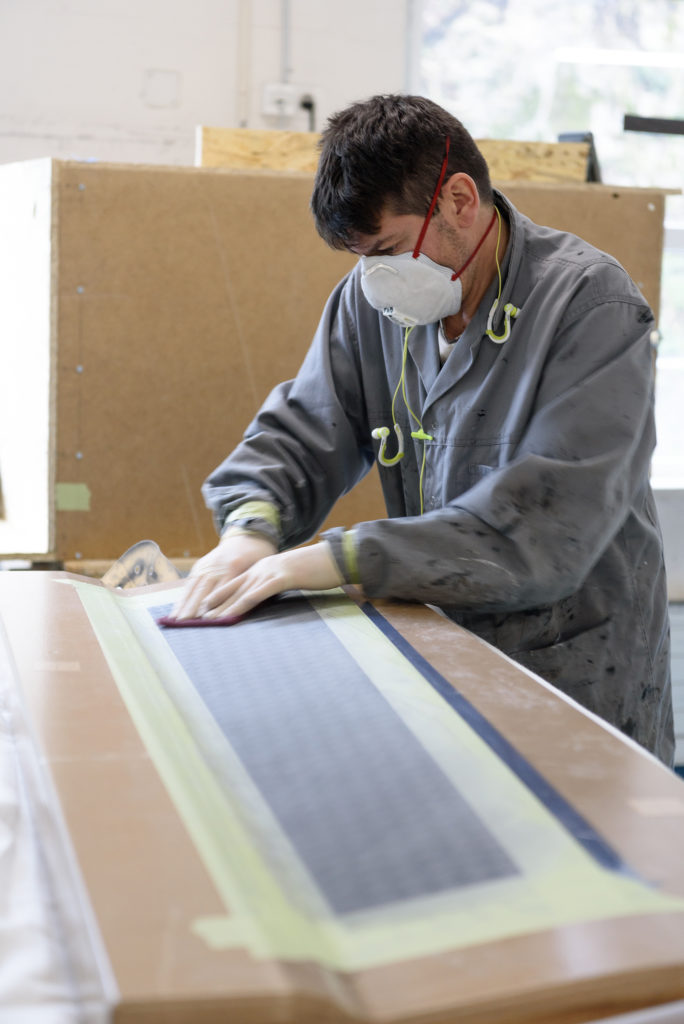
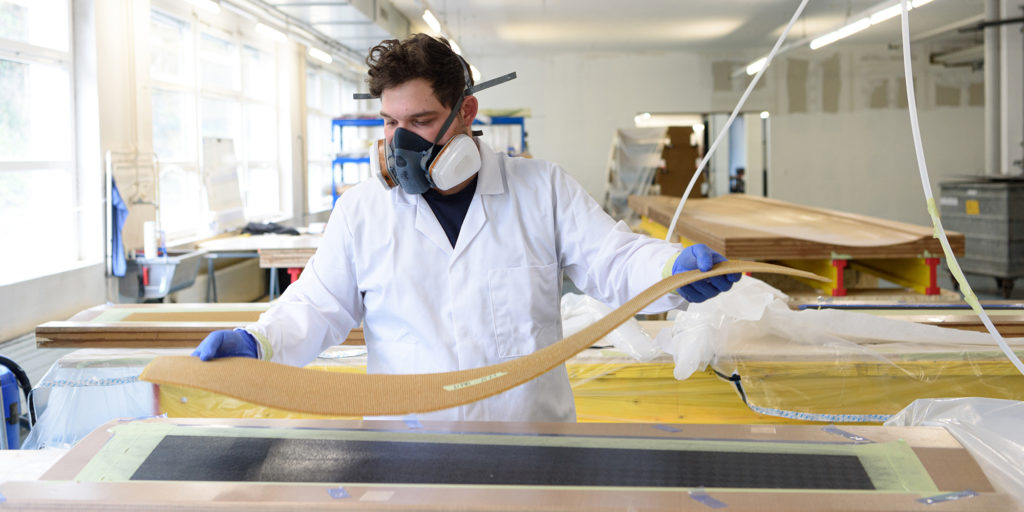
Once the honeycomb has “polymerized”, I.e. Allowed the glue to cure, we add a layer of two plies of carbon fiber to enclose the whole. Of course, everything is again impregnated with resin and left under vacuum for 24 hours.
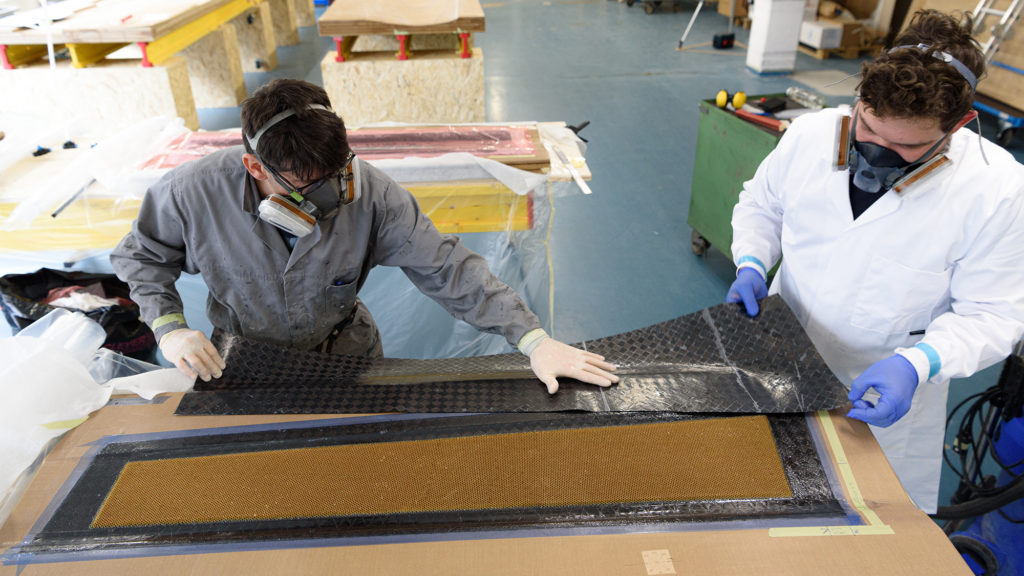
Finally, we get a first piece. This will be analyzed from all angles by engineers. It is necessary to be sure that there are no defects.
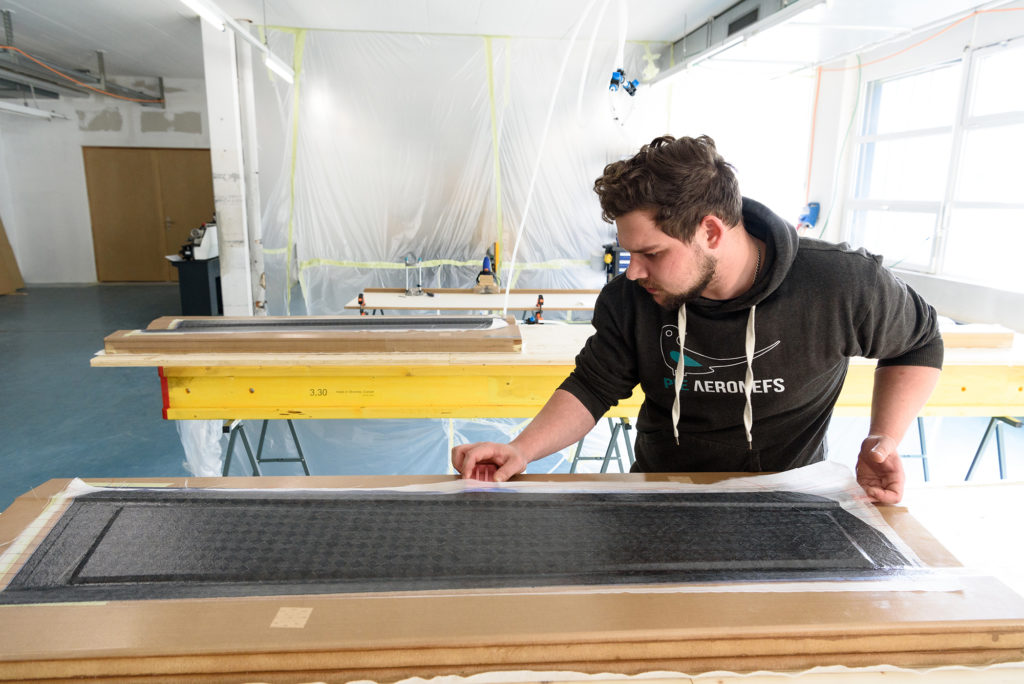
This is only half of the aileron, however. Another half was made in the same way. Added to this is the in-house manufactured spar that you see between the two skins of the fin on the following photo as well as the side structures.
All mechanical parts are part of the ailerons and thus allow the aileron to be mounted and actuated in the wing.
The production of our ailerons is now complete!
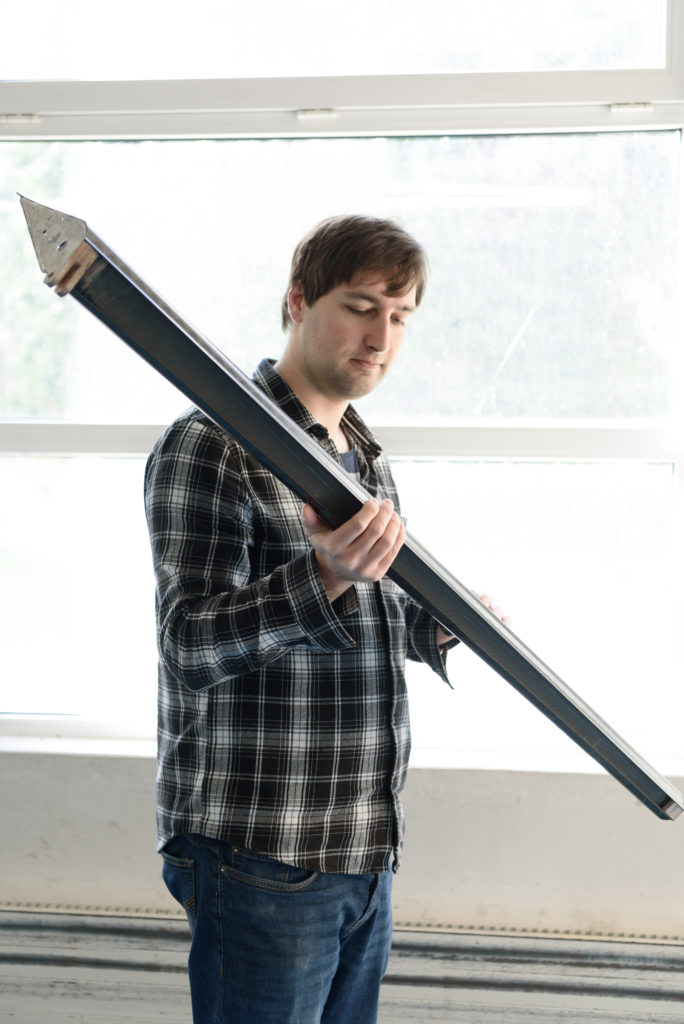
Here is a short videoclip of our manufacturing process:
